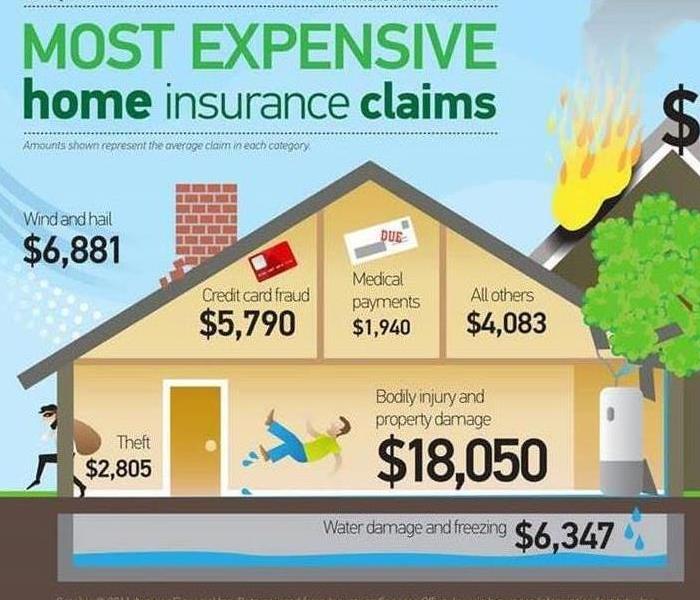How to Prevent Water Damage
4/2/2018 (Permalink)
Preventing water damage is a whole lot cheaper than paying for repairs. Here are three easy prevention tips.
KEY TAKEAWAYS
Clean your gutters, Ensure good drainage.
Direct downspouts 5-10’ away from the house.
Test your sump pump once a year.
Fix all water leaks.
- Replace missing roof shingles.
Water damage is the No. 1 culprit that weakens your home’s foundation and the very core that holds your house together.
You’ve heard about core strength for your body. Well, water damage hits at the core strength of your house, eventually causing serious structural damage. Damp wood invites termites and carpenter ants; plus, it causes mold and mildew.
Here’s how to prevent water damage using three easy strategies that will give you peace of mind the next time heavy storms hit.
#1. Ensure Good Drainage
Why it matters: Poor drainage weakens your foundation, causing cracks, uneven settling, and pathways for water to enter your home.
How to do it:
- clean your gutter routinely, A clogged gutter will send cascades of water down the side of your house, damaging your siding and foundation.
- Ensure your downspouts direct water 5 to 10 feet away from your house.
- Make sure your yard is sloped at least 6 inches over a 10-foot span away from your foundation. That slope keeps water from getting down right next to your foundation, where it could cause walls to lean, crack the masonry, and create leaks. (For crawl spaces, keeping water away makes sure excess water doesn’t pool underneath your floor, making for damp conditions that encourage mold, rot, and insects.)
- But don’t let the soil get too dry, either. Long dry spells let the soil around your house dry out and shrink. A big rain may make the soil expand, putting pressure on your foundation walls. In a drought, run a soaker hose at least 6 inches from the foundation and 3 inches under the soil to keep the soil from contracting and expanding.
Maintenance cost: Very little. Cleaning gutters can be a no-cost DIY job, or you can hire a pro for $50 to $250, depending on the size and height of your home. To get the soil slope you need, you might have to buy some additional topsoil.
Worst case if you put it off: Your foundation could settle, cracking your basement walls. The cost to stabilize, repair, and seal deteriorated foundation walls is a whopping $15,000 to $40,000.
#2. Test Your Sump Pump Regularly
Why it matters: Sump pumps come to life during storms. That’s not when you want to realize yours isn’t working properly. You should check it at least once a year, and ideally perform several checks during heavy storm seasons.
How to test your sump pump:
- Slowly fill the sump pump pit with water. Watch for the “float” (similar to the float in your toilet) to rise, which should turn on the pump. Then watch to make sure the water level falls.
- Test your backup pump the same way, but unplug the main pump first.
- If you don’t have a backup pump or a generator, and are on municipal water, get one that runs on water pressure. If you’re on well water, your only option is the battery kind.
#3. Check for Water Leaks and Fix Them
Why it matters: Persistent leaks lead to mold and mildew, rot, and even termites and carpenter ants (they like chewing soggy wood, since it’s soft). Yet if you fix a leak soon after it starts, there may be no long-term damage at all.
How to check for leaks:
- Check for dark spots under pipes inside sink cabinets, stains on ceilings, toilets that rock, and of course drips.
- At least once a year, inspect your roof. Repair missing, loose, and damaged shingles. Repair any cracked caulking and check for leaks around flashing.
Make sure to put SERVPRO of Carson in your emergency contacts for peace of mind. We have trained technicians ready to respond around the clock 365 days a year. (310) 637-7701



 24/7 Emergency Service
24/7 Emergency Service
